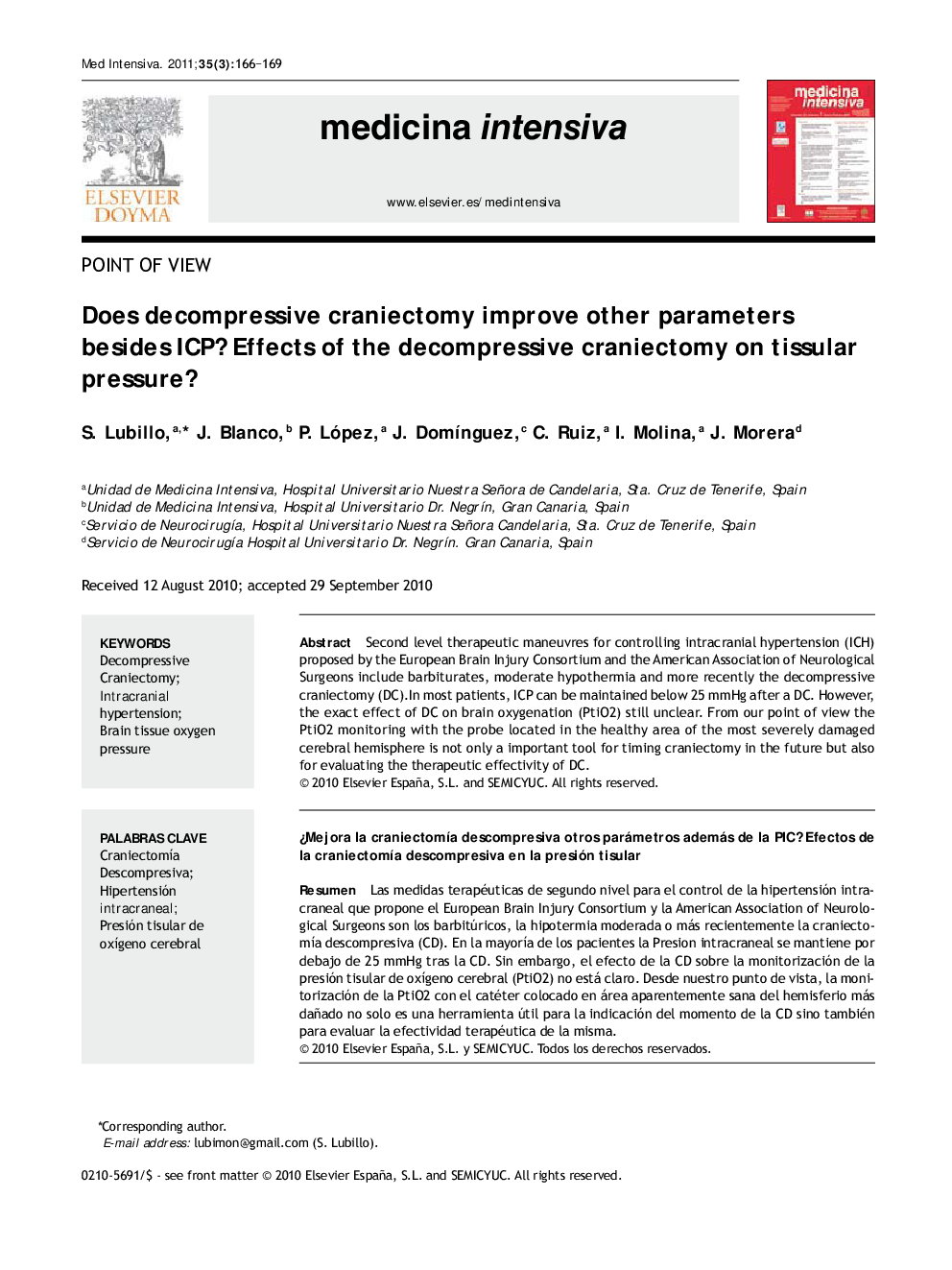| Article ID | Journal | Published Year | Pages | File Type |
|---|---|---|---|---|
| 3114256 | Medicina Intensiva (English Edition) | 2011 | 4 Pages |
Second level therapeutic maneuvres for controlling intracranial hypertension (ICH) proposed by the European Brain Injury Consortium and the American Association of Neurological Surgeons include barbiturates, moderate hypothermia and more recently the decompressive craniectomy (DC).In most patients, ICP can be maintained below 25 mmHg after a DC. However, the exact effect of DC on brain oxygenation (PtiO2) still unclear. From our point of view the PtiO2 monitoring with the probe located in the healthy area of the most severely damaged cerebral hemisphere is not only a important tool for timing craniectomy in the future but also for evaluating the therapeutic effectivity of DC.
ResumenLas medidas terapéuticas de segundo nivel para el control de la hipertensión intracraneal que propone el European Brain Injury Consortium y la American Association of Neurological Surgeons son los barbitúricos, la hipotermia moderada o más recientemente la craniectomía descompresiva (CD). En la mayoría de los pacientes la Presion intracraneal se mantiene por debajo de 25 mmHg tras la CD. Sin embargo, el efecto de la CD sobre la monitorización de la presión tisular de oxígeno cerebral (PtiO2) no está claro. Desde nuestro punto de vista, la monitorización de la PtiO2 con el catéter colocado en área aparentemente sana del hemisferio más dañado no solo es una herramienta útil para la indicación del momento de la CD sino también para evaluar la efectividad terapéutica de la misma.
